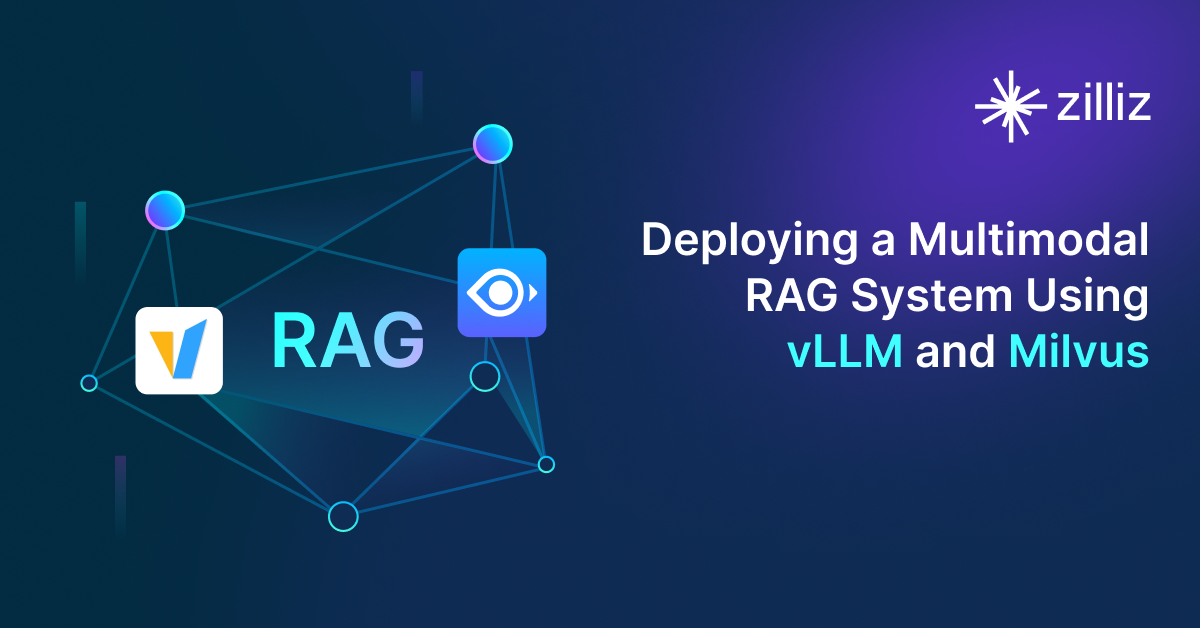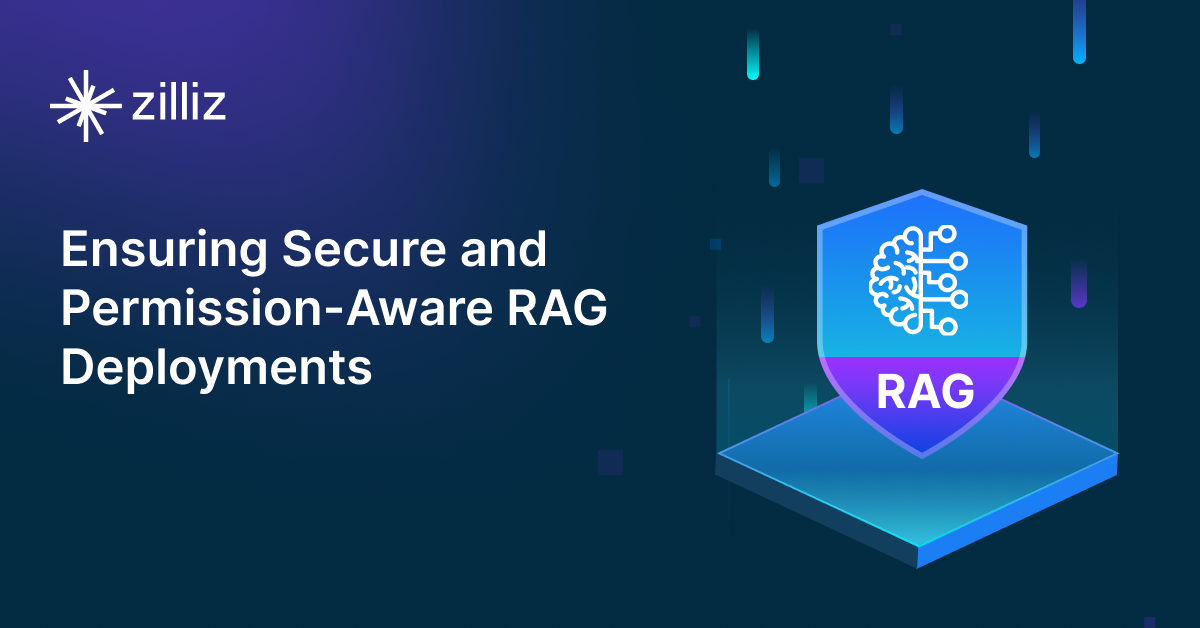Build RAG Chatbot with Llamaindex, Zilliz Cloud, Solar Mini, and voyage-3-large
Introduction to RAG
Retrieval-Augmented Generation (RAG) is a game-changer for GenAI applications, especially in conversational AI. It combines the power of pre-trained large language models (LLMs) like OpenAI’s GPT with external knowledge sources stored in vector databases such as Milvus and Zilliz Cloud, allowing for more accurate, contextually relevant, and up-to-date response generation. A RAG pipeline usually consists of four basic components: a vector database, an embedding model, an LLM, and a framework.
Key Components We'll Use for This RAG Chatbot
This tutorial shows you how to build a simple RAG chatbot in Python using the following components:
- Llamaindex: a data framework that connects large language models (LLMs) with various data sources, enabling efficient retrieval-augmented generation (RAG). It helps structure, index, and query private or external data, optimizing LLM applications for search, chatbots, and analytics.
- Zilliz Cloud: a fully managed vector database-as-a-service platform built on top of the open-source Milvus, designed to handle high-performance vector data processing at scale. It enables organizations to efficiently store, search, and analyze large volumes of unstructured data, such as text, images, or audio, by leveraging advanced vector search technology. It offers a free tier supporting up to 1 million vectors.
- Solar Mini: Solar Mini is an efficient AI model optimized for high-performance tasks with minimal computational resources. It delivers fast, context-aware responses while maintaining low latency, making it perfect for embedded systems, IoT applications, and mobile devices that need real-time language processing without compromising quality.
- Voyage-3-Large: This model is designed for generative tasks, offering enhanced creativity and contextual understanding. With robust training on diverse datasets, it excels in producing coherent narratives and dialogue, making it ideal for applications in storytelling, content creation, and interactive experiences where imaginative output is essential.
By the end of this tutorial, you’ll have a functional chatbot capable of answering questions based on a custom knowledge base.
Note: Since we may use proprietary models in our tutorials, make sure you have the required API key beforehand.
Step 1: Install and Set Up Llamaindex
pip install llama-index
Step 2: Install and Set Up Solar Mini
%pip install llama-index-llms-upstage llama-index
from llama_index.llms.upstage import Upstage
llm = Upstage(
model="solar-mini",
# api_key="YOUR_API_KEY" # uses UPSTAGE_API_KEY env var by default
)
Step 3: Install and Set Up voyage-3-large
%pip install llama-index-embeddings-voyageai
from llama_index.embeddings.voyageai import VoyageEmbedding
embed_model = VoyageEmbedding(
voyage_api_key="",
model_name="voyage-3-large",
)
Step 4: Install and Set Up Zilliz Cloud
pip install llama-index-vector-stores-milvus
from llama_index.core import VectorStoreIndex, StorageContext
from llama_index.vector_stores.milvus import MilvusVectorStore
vector_store = MilvusVectorStore(
uri=ZILLIZ_CLOUD_URI,
token=ZILLIZ_CLOUD_TOKEN,
dim=1536, # You can replace it with your embedding model's dimension.
overwrite=True,
)
Step 5: Build a RAG Chatbot
Now that you’ve set up all components, let’s start to build a simple chatbot. We’ll use the Milvus introduction doc as a private knowledge base. You can replace it with your own dataset to customize your RAG chatbot.
import requests
from llama_index.core import SimpleDirectoryReader
# load documents
url = 'https://raw.githubusercontent.com/milvus-io/milvus-docs/refs/heads/v2.5.x/site/en/about/overview.md'
example_file = 'example_file.md' # You can replace it with your own file paths.
response = requests.get(url)
with open(example_file, 'wb') as f:
f.write(response.content)
documents = SimpleDirectoryReader(
input_files=[example_file]
).load_data()
print("Document ID:", documents[0].doc_id)
storage_context = StorageContext.from_defaults(vector_store=vector_store)
index = VectorStoreIndex.from_documents(
documents, storage_context=storage_context, embed_model=embed_model
)
query_engine = index.as_query_engine(llm=llm)
res = query_engine.query("What is Milvus?") # You can replace it with your own question.
print(res)
Example output
Milvus is a high-performance, highly scalable vector database designed to operate efficiently across various environments, from personal laptops to large-scale distributed systems. It is available as both open-source software and a cloud service. Milvus excels in managing unstructured data by converting it into numerical vectors through embeddings, which facilitates fast and scalable searches and analytics. The database supports a wide range of data types and offers robust data modeling capabilities, allowing users to organize their data effectively. Additionally, Milvus provides multiple deployment options, including a lightweight version for quick prototyping and a distributed version for handling massive data scales.
Optimization Tips
As you build your RAG system, optimization is key to ensuring peak performance and efficiency. While setting up the components is an essential first step, fine-tuning each one will help you create a solution that works even better and scales seamlessly. In this section, we’ll share some practical tips for optimizing all these components, giving you the edge to build smarter, faster, and more responsive RAG applications.
LlamaIndex optimization tips
To optimize LlamaIndex for a Retrieval-Augmented Generation (RAG) setup, structure your data efficiently using hierarchical indices like tree-based or keyword-table indices for faster retrieval. Use embeddings that align with your use case to improve search relevance. Fine-tune chunk sizes to balance context length and retrieval precision. Enable caching for frequently accessed queries to enhance performance. Optimize metadata filtering to reduce unnecessary search space and improve speed. If using vector databases, ensure indexing strategies align with your query patterns. Implement async processing to handle large-scale document ingestion efficiently. Regularly monitor query performance and adjust indexing parameters as needed for optimal results.
Zilliz Cloud optimization tips
Optimizing Zilliz Cloud for a RAG system involves efficient index selection, query tuning, and resource management. Use Hierarchical Navigable Small World (HNSW) indexing for high-speed, approximate nearest neighbor search while balancing recall and efficiency. Fine-tune ef_construction and M parameters based on your dataset size and query workload to optimize search accuracy and latency. Enable dynamic scaling to handle fluctuating workloads efficiently, ensuring smooth performance under varying query loads. Implement data partitioning to improve retrieval speed by grouping related data, reducing unnecessary comparisons. Regularly update and optimize embeddings to keep results relevant, particularly when dealing with evolving datasets. Use hybrid search techniques, such as combining vector and keyword search, to improve response quality. Monitor system metrics in Zilliz Cloud’s dashboard and adjust configurations accordingly to maintain low-latency, high-throughput performance.
Solar Mini optimization tips
For optimizing Solar Mini in a RAG setup, focus on maintaining a balance between response speed and model accuracy, given its compact nature. Prioritize concise document chunking to ensure fast retrieval while keeping the context relevant. Leverage prompt tuning to ensure the model generates the most appropriate response for each query. Cache results for high-demand queries to minimize redundant calls and optimize latency. Additionally, ensure that the retrieval pipeline is fine-tuned for minimal resource consumption while maintaining high retrieval quality. Adjust system parameters for scalability, especially in resource-constrained environments like mobile apps and embedded devices.
voyage-3-large optimization tips
voyage-3-large provides enhanced reasoning capabilities, making it ideal for complex RAG tasks requiring deep contextual understanding. Optimize retrieval by implementing a multi-step ranking system that prioritizes highly relevant documents while filtering out lower-quality information. Use structured prompts with clearly delineated context and user queries to improve comprehension. Adjust temperature (0.1–0.3) and fine-tune top-k and top-p settings to maintain accuracy and prevent excessive variability. Take advantage of parallelized inference and request batching to improve processing efficiency. Leverage caching for high-frequency queries to reduce costs and latency. In multi-model setups, deploy voyage-3-large for intricate reasoning tasks while using smaller models for less complex queries to balance cost and performance effectively.
By implementing these tips across your components, you'll be able to enhance the performance and functionality of your RAG system, ensuring it’s optimized for both speed and accuracy. Keep testing, iterating, and refining your setup to stay ahead in the ever-evolving world of AI development.
RAG Cost Calculator: A Free Tool to Calculate Your Cost in Seconds
Estimating the cost of a Retrieval-Augmented Generation (RAG) pipeline involves analyzing expenses across vector storage, compute resources, and API usage. Key cost drivers include vector database queries, embedding generation, and LLM inference.
RAG Cost Calculator is a free tool that quickly estimates the cost of building a RAG pipeline, including chunking, embedding, vector storage/search, and LLM generation. It also helps you identify cost-saving opportunities and achieve up to 10x cost reduction on vector databases with the serverless option.
 Calculate your RAG cost
Calculate your RAG cost
What Have You Learned?
Congratulations on completing this tutorial! You've just taken a significant leap into the world of Retrieval-Augmented Generation (RAG) systems. Throughout this journey, you learned how to seamlessly integrate LlamaIndex, Zilliz Cloud, Solar Mini, and the voyage-3-large LLM to create an efficient and powerful RAG pipeline. Each component plays a crucial role: LlamaIndex helps you structure and simplify data access, while Zilliz Cloud allows for rapid querying and management of large datasets through its vector database. With the Solar Mini embedding model, you can convert textual data into embeddings that are easily utilized by the voyage-3-large LLM, enabling you to generate context-aware responses. This robust system opens the door for all kinds of innovative applications!
But that's not all! You also picked up some valuable optimization tips, which will help you fine-tune your system for better performance and higher accuracy. Plus, the free RAG cost calculator you explored will empower you to keep track of expenses while managing your resources wisely. Now, armed with this knowledge, it’s time to roll up your sleeves and dive into building, optimizing, and crafting your very own RAG applications. The possibilities are endless, and with your newfound skills, you’re poised to create something truly remarkable. So go ahead, unleash your creativity, and start innovating today—you've got this!
Further Resources
🌟 In addition to this RAG tutorial, unleash your full potential with these incredible resources to level up your RAG skills.
- How to Build a Multimodal RAG | Documentation
- How to Enhance the Performance of Your RAG Pipeline
- Graph RAG with Milvus | Documentation
- How to Evaluate RAG Applications - Zilliz Learn
- Generative AI Resource Hub | Zilliz
We'd Love to Hear What You Think!
We’d love to hear your thoughts! 🌟 Leave your questions or comments below or join our vibrant Milvus Discord community to share your experiences, ask questions, or connect with thousands of AI enthusiasts. Your journey matters to us!
If you like this tutorial, show your support by giving our Milvus GitHub repo a star ⭐—it means the world to us and inspires us to keep creating! 💖
- Introduction to RAG
- Key Components We'll Use for This RAG Chatbot
- Step 1: Install and Set Up Llamaindex
- Step 2: Install and Set Up Solar Mini
- Step 3: Install and Set Up voyage-3-large
- Step 4: Install and Set Up Zilliz Cloud
- Step 5: Build a RAG Chatbot
- Optimization Tips
- RAG Cost Calculator: A Free Tool to Calculate Your Cost in Seconds
- What Have You Learned?
- Further Resources
- We'd Love to Hear What You Think!
Content
Vector Database at Scale
Zilliz Cloud is a fully-managed vector database built for scale, perfect for your RAG apps.
Try Zilliz Cloud for Free


